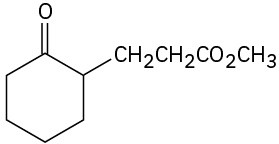23.11 Carbonyl Condensations with Enamines: The Stork Enamine Reaction
In addition to enolate ions, other kinds of carbon nucleophiles also add to α,β-unsaturated acceptors in Michael-like reactions. Among the most important and useful of such nucleophiles, particularly in biological chemistry, are enamines, which are readily prepared by reaction between a ketone and a secondary amine (Section 19.8). For example:

As the following resonance structures indicate, enamines are electronically similar to enolate ions. Overlap of the nitrogen lone-pair orbital with the double-bond p orbitals leads to an increase in electron density on the α carbon atom, making that carbon nucleophilic.
An electrostatic potential map of N,N-dimethylaminoethylene shows this shift of electron density (red) toward the α position.
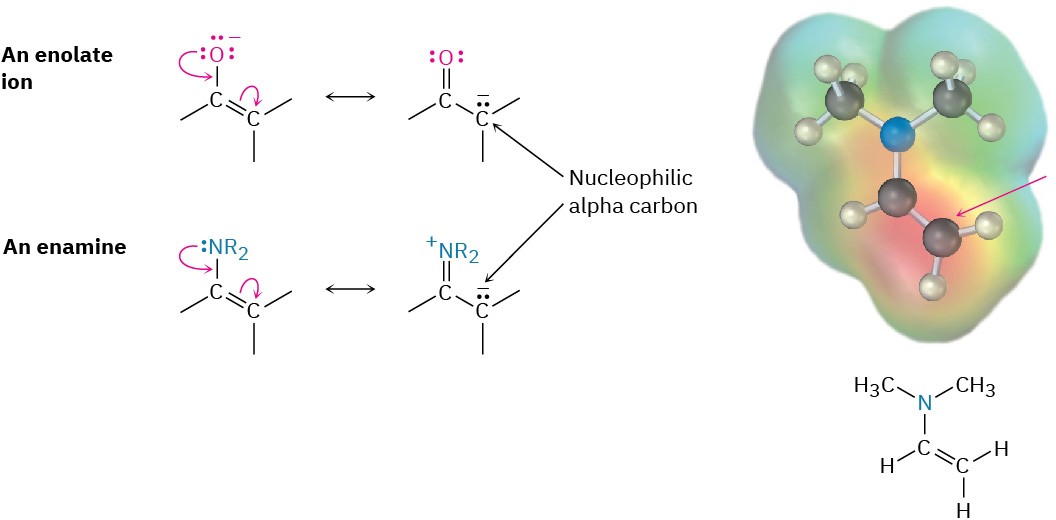
Enamines behave in much the same way as enolate ions and enter into many of the same kinds of reactions. In the Stork enamine reaction, named for its discoverer, Gilbert Stork of Columbia University, for example, an enamine adds to an α,β-unsaturated carbonyl acceptor in a Michael-like process. The initial product is then hydrolyzed by aqueous acid to yield a 1,5-dicarbonyl compound. The overall reaction is thus a three-step sequence of
(1) enamine formation from a ketone, (2) Michael addition to an α,β-unsaturated carbonyl compound, and (3) enamine hydrolysis back to a ketone.
The net effect of the Stork enamine reaction is the Michael addition of a ketone to an α,β– unsaturated carbonyl compound. For example, cyclohexanone reacts with the cyclic amine
pyrrolidine to yield an enamine; further reaction with an enone such as 3-buten-2-one yields a Michael adduct; and aqueous hydrolysis completes the sequence to give a 1,5- diketone (Figure 23.8).
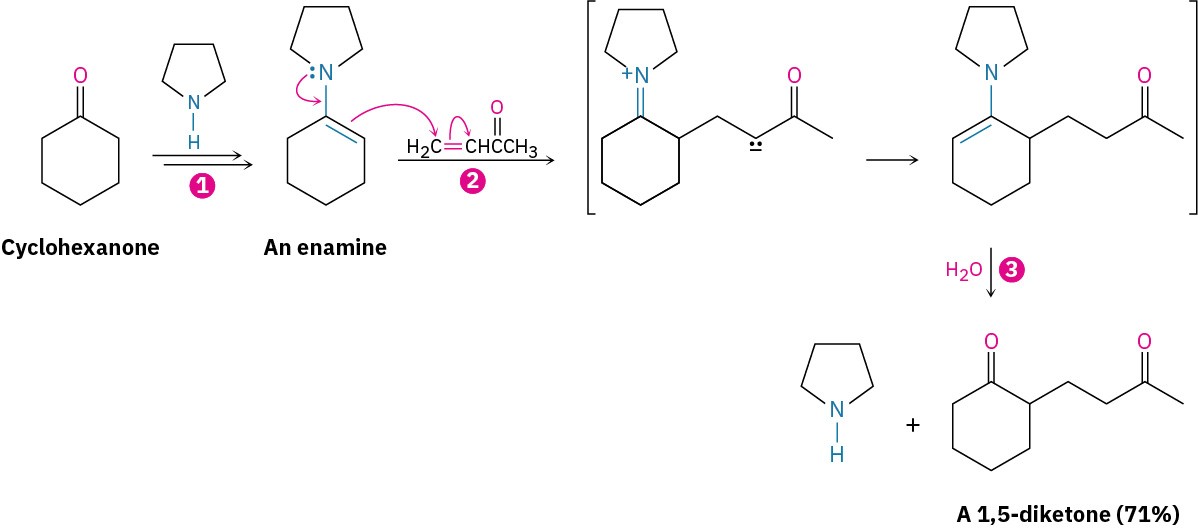
Figure 23.8 The Stork enamine reaction between cyclohexanone and 3-buten-2-one.
(1) Cyclohexanone is first converted into an enamine, (2) the enamine adds to the α,β– unsaturated ketone in a Michael reaction, and (3) the conjugate addition product is hydrolyzed to yield a 1,5-diketone.
The enamine–Michael reaction has two advantages over the enolate-ion–Michael reaction that makes it particularly useful in biological pathways. First, an enamine is neutral, easily prepared, and easily handled, while an enolate ion is charged, sometimes difficult to prepare, and must be handled carefully. Second, an enamine from a monoketone can be used in the Michael addition, whereas only enolate ions from β-dicarbonyl compounds can be used.
Worked Example 23.6Using the Stork Enamine ReactionHow might you use an enamine reaction to prepare the following compound?
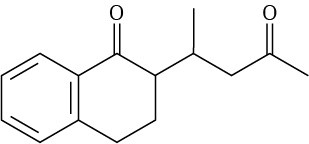 StrategyThe overall result of an enamine reaction is the Michael addition of a ketone as donor to an α,β-unsaturated carbonyl compound as acceptor, yielding a 1,5-dicarbonyl product. The C– C bond formed in the Michael addition step is the one between the α carbon of the ketone donor and the β carbon of the unsaturated acceptor.
StrategyThe overall result of an enamine reaction is the Michael addition of a ketone as donor to an α,β-unsaturated carbonyl compound as acceptor, yielding a 1,5-dicarbonyl product. The C– C bond formed in the Michael addition step is the one between the α carbon of the ketone donor and the β carbon of the unsaturated acceptor.
 Solution
Solution
Problem 23-19
What products would result after hydrolysis from reaction of the enamine prepared from cyclopentanone and pyrrolidine with the following α,β-unsaturated acceptors?
(a) H2C═CHCO2Et
(b) H2C═CHCHO
(c) CH3CH═CHCOCH3
Problem 23-20
Show how you might use an enamine reaction to prepare each of the following compounds: (a)
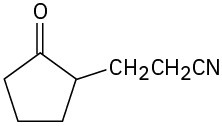
(b)
